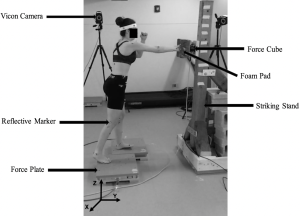Motor Skill Development Through Krav Maga
Motor skill development is like learning a new dance step or how to swing a tennis racket. It’s all about getting better at moving and controlling your body. When you’re young, simple stuff like grabbing a toy or walking can be a big deal. As you grow, you learn to do more complex things, like shooting a basketball or playing the piano. It’s your brain and muscles developing co-ordination through repetition. With practice, what was once tricky becomes easily achievable.
In the professional study “The effects of single versus multiple training sessions on the motor learning of two Krav Maga strike techniques, in women,” researchers in Canada delved into the optimization of training methodologies for martial arts, specifically Krav Maga. This comprehensive research evaluates how varying frequencies of training sessions impact the acquisition and retention of essential Krav Maga skills among female practitioners. The findings of this study provide valuable insights for instructors and students alike, emphasizing the effectiveness of training strategies in the context of motor skill development in martial arts.
For a detailed analysis, you can read the full study here
Within this study, Krav Maga’s approach to its techniques, like the straight punch and defensive kick, are based on simple body movements that can be learned and remembered quickly. This study looked into how beginner women learn and remember these two Krav Maga moves, and whether more training helps them get even better at them.
Sixteen healthy female university students, aged 23 on average, participated in a study on Krav Maga techniques. They were chosen based on specific criteria, like being between 18-30 years old and having no prior martial arts experience. Those with recent musculoskeletal injuries were excluded. Participants were split into two groups of eight for either single-session (ST) or multiple-session (MT) training. This study setup helped assess how effectively they could learn and retain Krav Maga skills.
Before training, participants performed baseline assessments of punch and kick strikes without prior instruction, focusing on power, speed, and accuracy. After baseline, they received segmented training on strike techniques from a certified Krav Maga instructor. This included practicing movements focusing on specific checkpoints. Participants then underwent immediate reassessment. The multiple-session group repeated training for four days, while the single-session group had no further training. Subsequent reassessments occurred on the fifth and twelfth days, with participants instructed not to practice Krav Maga techniques outside of these sessions.
The study assessed various aspects of Krav Maga techniques among female practitioners. For the straight punch, factors like arm movement, recoil velocity, and the force applied to the ground didn’t significantly differ between groups or over time. However, there was an increase in recoil velocity after the first training session. For the defensive kick, thigh and knee movements improved after the initial training. The force of the kick also increased following the first session and remained consistent.
These findings suggest that both techniques can be learned in as little as 15 min of training, and the skills were retained after 12 days after a single training session. Further development and learning can occur through ongoing feedback over a variety of exercises and stimuli.
Krav Maga offers an accessible and effective path for motor skill development of all ages and backgrounds.
Embrace the opportunity to learn and grow; join our Krav Maga classes or seminars today, and embark on a journey of skill, strength, and self-improvement.
2020. The effects of single versus multiple training sessions on the motor learning of two Krav Maga strike techniques, in women. PeerJ 8:e8525 https://doi.org/10.7717/peerj.8525



